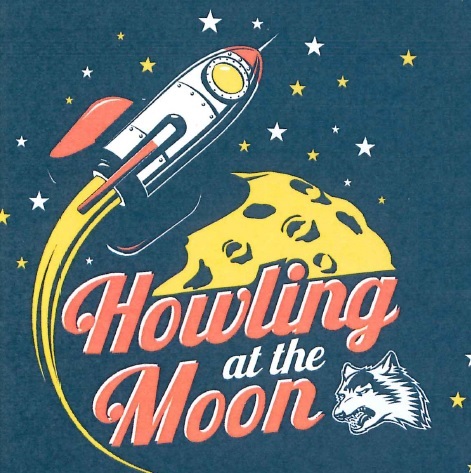Homecoming is approaching at IU East, and this year’s theme is “Howling at the Moon”. Events are scheduled starting October 28 and culminating on November 3 with the installation and reception for Chancellor Dennis Rome at 11:00 in Vivian Auditorium and the Whitewater Hall lobby, and later the Homecoming Men’s Basketball game at 1:00 against Northwestern and the Women’s Volleyball game at 7:00 against Shawnee State, in the Student Events Center.
Howling at the moon also evokes space; and ties the festivities to the upcoming eclipse where the moon will obscure the sun. Wolves howling at the moon is a widely recognized cultural image. Of course, wolves don’t just howl at night – or even specifically at the moon. They are as likely to howl during the day; and they use their vocalizations to communicate with other pack members, to warn rival wolf packs about entering their territory, and to attract mates.

A lot can be learned from wolf howls – their frequency, variance across seasons, and changes due to humans – such as in response to emergency alert sirens – all give scientists information. Wolves can also be distinguished by their howls, allowing for non-invasive ways of tracking and documenting them. The library offers many academic resources for studying the behavior of wolves, like howling. In particular, databases like Wiley Online Library, ProQuest Science, and BioOne are all useful for exploring animal behavior.
The library offers many books about wolf behavior, including Among Wolves: Gordon Haber’s Insights into Alaska’s Most Misunderstood Animal by Marybeth Holleman, Societies of Wolves and Free-Ranging Dogs by Stephen Spotte, Wolves: Behavior, Ecology, and Conservation by L. David Mech, The First Domestication: How Wolves and Humans Coevolved by Raymond Pierotti, or Wolf Packs by Karen Latchana Kenney.

There are also books about animal behavior more broadly, including Animal Personality: The Science Behind Individual Variation by Jill R. D. MacKay, Neural Networks and Animal Behavior by Magnus Enquist, Hormones and Animal Social Behavior by Elizabeth Adkins-Regan, Determinants of Animal Behaviour by Jo-Anne Cartwright, or Understanding Animal Behaviour by Rory Putman.
Interested in learning more about wolves? Ask U! iueref@iue.edu or click this button:




